#drivingcar
Text
#professionalism#etiquette#driverlife#drivingtips#careeradvice#safedriving#roadetiquette#drivingetiquette#drivingprofession#drivingcareer#drivingetiquette101#drivingetiquettetips#drivingetiquetterules#drivingetiquetteguide
0 notes
Link
#autonomousdrivingtechnology#autonomousvehicletechnology#AutonomousVehicles#DassaultSystemes#digitaltwin#Futurride#ride-hailing#robocars#robotaxi#self-drivingcars#self-drivingvehicles#sustainablemobility#Tesla#Waymo
0 notes
Text
AI-Driven Cars Have Transformed from Science Fiction to Street Reality in 2024

Have you ever caught yourself dreaming of driving around town in a self-driving car?Get ready, because this future is right around the corner, and you don't even know it, because the race to build cars is at its peak, and artificial intelligence is the central pillar.But before we dive headlong into this field, I'd like to stop for a moment and think about why anyone would want a self-driving car. Try to imagine this scenario: you're driving along the freeway and suddenly you see a chicken and a sloth playing pickleball on the side of the road (sorry, that's the best I could come up with). In a normal car, you'd probably be concentrating on the road and miss this strange sight (which, let's face it, sucks). But what if you were in a self-driving car? You'd be able to enjoy the show as you please, without fear of finding yourself in oncoming traffic.
The need for autonomous cars
Let's face it, the previous example was the lamest of them all, and it's certainly not the most appropriate. But I'd like you to keep this in mind: around 90% of car accidents in the United States are due to human error, according to the National Highway Traffic Safety Administration. Let's face it, we humans are broken drivers. We're (always) distracted, we're tired, we make bad decisions. Why do we behave as if we had 16 at the wheel?It's because of this kind of attitude that AI steps in, and promises to be wise and responsible adults in the car.the AI doesn't get distracted by an incredible song on the radio, or by a discussion about whether that's Ryan Reynolds we've just passed on the street - just the opposite of us. It keeps its eyes (that's a metaphor okay!) on the road at all times.
How does AI power autonomous vehicles?
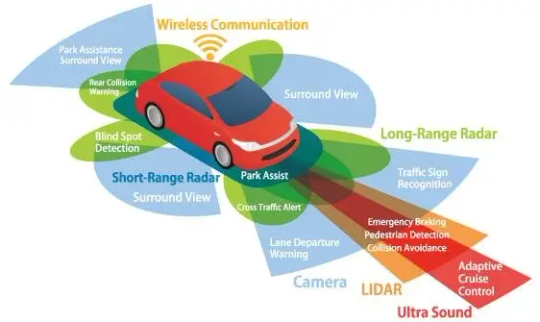
The question on everyone's mind is how can AI enable a car to drive itself? Well, it's not magic (even if it looks a little like magic, that is). Rather, it's about giving the car a 2.0 version of the five senses, and a brain to make sense of the hubbub.
Key AI Technologies Enabling Self-Driving Cars
The Car's Eyes and Ears
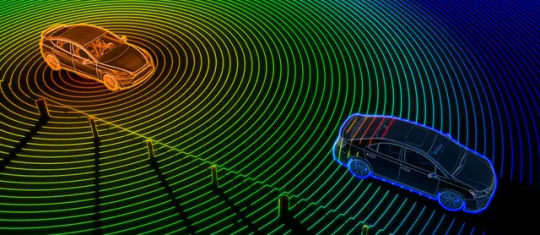
Lidar in Autonomous Driving: Pros, Cons & More
dubizzle
First of all, we have the car's eyes. They come in the form of cameras, radars and a device called LIDAR (which looks like a radar, but with lasers - in case you didn't know, this technology was used in Avengers Infinity War, the scene where we see Thanos' ship land on a city - it wasn't a photo, a video or even a 3D city). These sensors scan the environment all the time, looking for absolutely everything, whether it's other cars, pedestrians or even the chicken and sloth we mentioned earlier ( Good! I promise this is the last time we'll talk about this stuff)
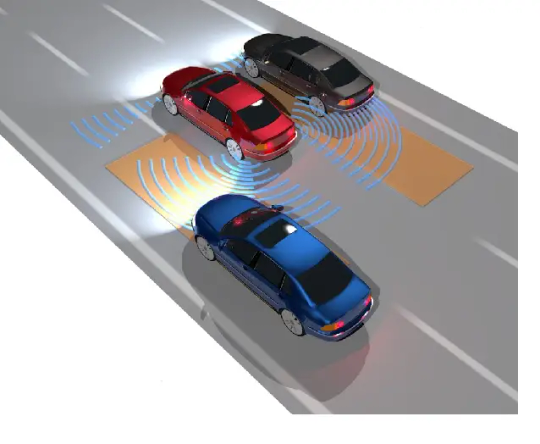
Vehicle tracking using ultrasonic sensors & joined particle weighting
Semantic Scholar
Next, we have the ears. These are ultrasonic sensors that work like bat sonar, bouncing sound waves off nearby targets to estimate their distance. And it's very useful for parking, because, let's be honest, not even the AI wants to parallel park if it can avoid it.then there's the sense of touch, which in this case consists of feeling the car's movements. Accelerometers and gyroscopes track the car's speed and position, a bit like the inner ear does for humans (but without the risk of discomfort in the car, otherwise it would have been weird).The Brains of the Operation
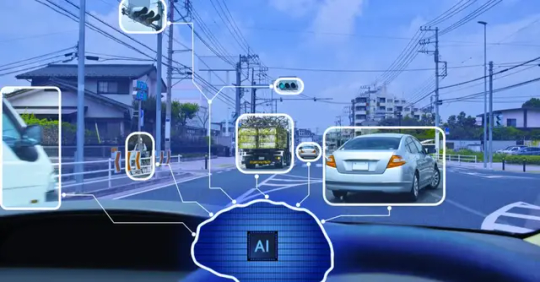
active learning and autonomous-vehicles-cloudfactory.com
All this sensory information is fed to the car's brain, a sort of hyper-powerful on-board computer running artificial intelligence algorithms. And this is where the magic happens. The AI will use all this data to build a real-time 3D model of the world around the car. It's a bit like The Matrix, but instead of dodging bullets, it dodges potholes and pedestrians.Machine Learning: Practice Makes Perfect But it's not enough for AI to see the world, it has to understand it. For this, we need machine learning. When it analyzes millions of hours of driving data, AI will learn to recognize what I'll call patterns and make anticipations, or in more appropriate terms, predictions.If a car overtakes, is it likely to change lanes? That pedestrian, is he about to step off the sidewalk? AI simply asks itself these kinds of questions all the time, answering them on a regular basis and far more quickly than a human ever could.Path Planning and Navigation

Autonomous Driving and the Need For Motion Planning- Realtime Robotics
Once the AI has understood what's going on around it, it needs to decide what to do. This is where it really starts to get exciting (and a little philosophical, I'd say). The AI has to be programmed with a set of rules and priorities. Should it prefer the safety of its passengers to that of pedestrians? How should it handle moral situations like the famous cart problem?These are difficult questions, and it's because of situations like these that we're all driving around in self-driving cars.But progress is being made. Companies like Tesla, Waymo and Uber are traveling millions of kilometers in autonomous cars, and they're teaching their AIs how to handle all kinds of situations, from rush-hour traffic to unexpected weather conditions.
Levels of Vehicle Automation
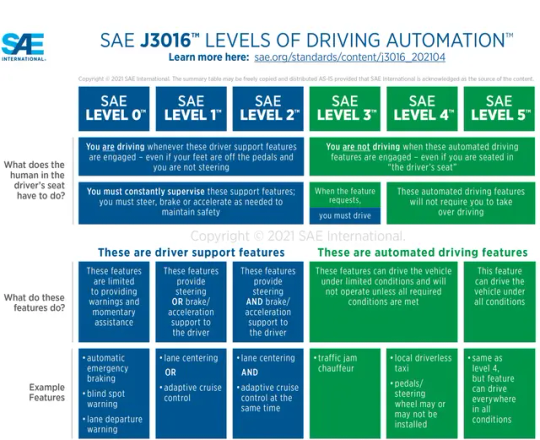
SAE Levels of Driving Automation™ Refined for Clarity and- SAE international
Speaking of progress, let's talk about autonomous driving levels, because if you didn't already know, the Society of Automotive Engineers (SAE) has kindly and carefully only determined six levels for us, from 0 to 5Autonomy levels- Level 0 corresponds to grandfather's old pickup truck, with no automation whatsoever. No automation whatsoever.
- Level 1 can, and I mean can, have cruise control or lane-keeping assistance. Other than that, zilch.
- We're currently seeing a lot of Level 2 cars on the road, which can handle certain driving roles and nothing more, but still need a human to take over at any given moment.
- It's at level 3 that we get to caress autonomous driving a little. These cars can handle the majority of driving tasks, and still need WE, the human saviors, to take over.
- Level 4 cars can drive themselves in most conditions, but when the going gets tough and the going gets a bit red, like the weather, they gently give way to humans.
- And level 5? This is the Holy Grail, the pearl of pearls, a car capable of driving itself, in all conditions, in all situations, without the need for human intervention.Now, I've had some personal experiences with this technology that I'd like to share. I recently test-drove a car with Level 2 autonomy, and let me tell you, it was both exhilarating and terrifying. Watching the steering wheel move on its own as the car navigated a curve was like witnessing magic. But I also found myself constantly hovering my hands over the wheel, ready to take control at a moment's notice. It's a stark reminder that we're still in a transitional phase, where AI driving automation in the automotive industry is impressive but not yet perfect.Technical ChallengesYou may be thinking: all this sounds cool, but when am I going to buy this thing? That's the million-dollar (or multi-billion-dollar) question.The truth is, we're not there yet. While companies like Tesla are still inventing advanced driving assistance systems, truly autonomous vehicles are still a long, long way off - in fact, they're still in the testing phase. Personally, I couldn't care less about autonomous cars, it's not something I'm looking forward to, but if autonomous cars tempt you, some analysts think that by 2030, up to 15% of cars sold could be fully autonomous. It may not sound like much, but in 2010 electric cars accounted for less than 1% of new car sales. Today, they account for almost 10% in many countries. Technology has a way of surprising us.The catch (there is always a catch)As always, and this is starting to get on my nerves, there are challenges to be met. One of the most important is ensuring that these AI drivers are capable of handling unpredictable real-world events. It's one thing to navigate a well-mapped city street, but not the same for a country road that's not on any map, or a construction zone that appears overnight. These are the kinds of scenarios that keep AI engineers up at night.There's also the question of public confidence. There are many who disagree or are afraid of entrusting absolute control to a computer. It's going to take time, time and more time (I don't think the 2030s are still relevant.) and proof of safety, so there's a lot of proof of safety before most of us feel comfortable taking a little nap while our car takes us to work. In any case, if we can be persuaded to implant a neuralinks chip in our brains, this trick will be a piece of cake.And yes! We're already entrusting our lives to artificial intelligence. Every time you board a commercial aircraft, you're trusting the artificial intelligence systems that manage much of the flight. And without lying to us, most of us trust Google Maps more than our own sense of direction.Is it worth fighting for?By the time we get to fully autonomous cars, we'll have traveled a whole long and boring, with plenty of potholes along the way. But if we consider the benefits it could bring, it might just be worth it. Isn't a world where road accidents are drastically reduced, where the elderly and disabled can move around freely, where traffic flows like water because every car communicates with every other car, worth it?Yes! it's worth working for, even if we have to deal with a few bugs along the way. After all, as any programmer will tell you, the first step in fixing a bug is to find it. Not to mention that test vehicles cover millions of miles every year, which could eliminate these bugs at a hell of a rate.So if you happen to be stuck in those pesky traffic jams and think about this article and the day when you'll be able to sit back and let your car do the driving, remember our little secret: that day will come. Maybe not tomorrow, maybe not next year, maybe not even in the next 10 years. But it's coming. And when it does, it will change the way we travel forever.
Conclusion
In the meantime, keep your eyes on the road. And if you happen to see a chicken and a sloth playing pickleball, well ( damn! I promised I wouldn't talk about that thing anymore)... maybe it's time to stop and check if you're dreaming. Or if you've stumbled across a Pixar movie. Either way, it might be best to let a human take the wheel on this particular journey.
Read the full article
#AIadvancementsinautonomousvehiclenavigation#AIalgorithmsforself-drivingcars#AIdrivingautomationintheautomotiveindustry#AIinautonomousvehicles#AIinself-drivingcars#AI-basedautonomousvehiclesystems#AI-poweredself-drivingcarsoftware#AI'simpactonautonomousvehicletechnology#autonomousvehicles#benefitsofAIinautonomousdriving#futureofAIinself-drivingcars#self-drivingcarsafetywithAI#self-drivingcars#self-drivingtechnology#theroleofAIindevelopingself-drivingtechnology
0 notes
Text

A1 Transportation academy DZ License Training in Mississauga give all together lessons for getting a DZ class license which is important for those who wants to drive Straight trucks or any kind of vehicle of more than 11000 KGS. The training involves lectures, demonstrations, and practical behind the wheel driving lessons with topics such as inspection of the vehicle, safety measures, and driving skills. Through the expertise of the instructors and the training vehicles used, participants are fully equipped for road test and their future driving profession.
For More Information Visit https://a1ta.ca/dz-driver-training
#DZLicense#DZTraining#TruckDriving#MississaugaDrivers#CommercialLicense#TruckDriverTraining#DrivingSchool#RoadSafety#DriverEducation#LicenseTraining#HeavyVehicleLicense#DrivingCareer#CDLTraining#MississaugaTrucking#TruckDrivingSchool#DZCourse
0 notes
Text
#CDLTraining#TruckDrivingSchool#BaltimoreTrucking#MarylandCDL#DrivingCareer#RoadToSuccess#CDLLicense#TruckersLife#CDLPrep#DrivingSchoolNearMe#CDLSchool#CDLSchools#TruckDrivingClasses#MarylandDriving#CDLTrainingProgram#TruckerLife#RoadToCDL#CDLJobs#ProfessionalDriving#MarylandTrucking#CDLTestPrep
0 notes
Text
Everything You Need to Know About Autonomous Vehicles

Autonomous Vehicles: Progress, Challenges, and Their Potential Impact on Transportation and Logistics
Introduction
The transportation industry is on the verge of a transformative revolution led by autonomous vehicles, including self-driving cars and drones. These once-futuristic technologies are now a reality, poised to profoundly impact transportation and logistics. In this article, we delve into their progress, challenges, and potential to reshape mobility and the movement of goods.
The Progress of Autonomous Vehicles
Self-Driving Cars:
Innovations and breakthroughs have filled the journey of developing self-driving cars. Companies like Tesla, Waymo, and General Motors have invested heavily in autonomous vehicle technology. Progress has been significant, with self-driving cars now undergoing testing on public roads in various locations worldwide.
Self-driving tech relies on AI and ML algorithms, enabling vehicles to sense their environment, make instant choices, and adapt. Companies like Tesla offer Autopilot and Full Self-Driving (FSD) features, slowly introducing autonomy while ensuring safety and driver oversight.
Drones:
Drones, or UAVs, have swiftly gone from hobbyist toys to crucial tools across industries. Companies like Amazon and UPS are testing drone delivery services, which could revolutionize logistics. In agriculture, people use drones for crop monitoring, search and rescue operations, and even for capturing stunning aerial photography.
Challenges in Autonomous Vehicle Development
While progress has been promising, we still need to address several challenges before autonomous vehicles can fully integrate into our daily lives.
- Safety Concerns: Ensuring the safety of autonomous vehicles remains a paramount challenge. Even a single accident involving a self-driving car can lead to public distrust and regulatory setbacks.
- Regulatory Hurdles: Developing a comprehensive regulatory framework for autonomous vehicles is complex. Governments and regulatory bodies worldwide are still working to establish clear guidelines and standards for testing and deploying these vehicles.
- Technical Limitations: Despite advancements in AI, self-driving cars struggle to navigate in extreme weather conditions and complex urban environments with heavy traffic and pedestrians.
- Ethical Dilemmas: Programmers of autonomous vehicles face ethical questions about how they prioritize human safety in emergencies when these vehicles must make split-second decisions.
Potential Impact on Transportation and Logistics
- Reduced Accidents: Autonomous vehicles have the potential to significantly reduce accidents caused by human error, making roads safer for everyone.
- Efficient Logistics: Drones and self-driving delivery vehicles can optimize the logistics and supply chain industry by reducing delivery times and costs.
- Improved Traffic Flow: Self-driving cars can communicate with each other to optimize traffic flow, reducing congestion and fuel consumption.
- Enhanced Accessibility: Autonomous vehicles can provide transportation solutions for people with disabilities and the elderly, enhancing mobility and independence.
- Environmental Benefits: By optimizing routes and driving habits, autonomous vehicles can contribute to reducing greenhouse gas emissions and improving air quality.
Autonomous vehicles (AVs) are vehicles that can operate without human input. This includes both self-driving cars and drones. A combination of sensors, artificial intelligence, and machine learning technologies powers AVs, enabling them to perceive their surroundings, make decisions, and navigate safely.

Autonomous Vehicles
Progress in Autonomous Vehicle technology
In recent years, there has been significant progress in AV technology. Many countries have tested self-driving cars on public roads, and some companies have even launched commercial self-driving taxi services. Drones are also finding use in various commercial applications, including package delivery, aerial photography, and agricultural inspection.
Challenges of Autonomous Vehicle Technology
Despite the progress made, we still need to address several challenges before widely adopting AVs. One challenge is the development of safe and reliable AV software. AVs need to be able to handle a wide range of driving scenarios, including unexpected events such as pedestrians or animals crossing the road. Another challenge is the development of AV hardware that is affordable and durable.
Progress of self-driving cars and drones
In recent years, there has been significant progress in the development of self-driving cars and drones. A number of companies, including Google, Waymo, and Tesla, are testing self-driving cars on public roads. Some companies, such as Nuro, have even launched limited commercial self-driving delivery services.
Drones have also made significant progress in recent years. Drones are now relatively inexpensive and easy to use, and they are being used for a variety of applications, including delivery, inspection, and mapping.
Challenges of self-driving cars and drones
Despite the progress that has been made, AVs still face a number of challenges before they can be widely adopted. One of the biggest challenges is the development of reliable and safe AV technology. AVs must be able to safely navigate a variety of complex environments, including roads with other vehicles, pedestrians, and cyclists.
Another challenge is the regulatory landscape. Many countries have not yet developed regulations for AVs, and there is some variation in the regulations that have been developed. This can make it difficult for companies to test and deploy AVs on a wider scale.
Potential impact of Autonomous Vehicles on transportation and logistics
AVs have the potential to revolutionize transportation and logistics. Self-driving cars could make transportation more efficient, safer, and more accessible. For example, self-driving cars could offer on-demand transportation services, reducing the need for people to own cars. Self-driving cars could also enhance the efficiency of goods transportation, potentially lowering costs for businesses and consumers.
Drones could also have a significant impact on transportation and logistics. It could deliver packages quickly and efficiently, especially in remote or congested areas. Drones could also inspect infrastructure and deliver medical supplies.
Conclusion
AV technology is still in its early stages of development, but it has the potential to revolutionize transportation and logistics. As AV technology continues to improve, we can expect to see more and more self-driving cars and drones on our roads and in our skies.
Here are some specific examples of the potential impact of AVs on transportation and logistics:
- Self-driving taxis and ride-sharing services: Companies could use self-driving cars to offer on-demand taxis and ride-sharing services. This would make transportation more convenient and affordable for people, and it would also reduce the need for people to own cars.
- Self-driving trucks: Companies could use self-driving trucks to transport goods more efficiently and safely. This could reduce costs for businesses and consumers, and it could also improve road safety.
- Drone delivery services: Companies could use drones to deliver packages quickly and efficiently, especially in remote or congested areas. This could be a boon for e-commerce businesses and consumers alike.
- Drone inspection services: Companies could use drones to inspect infrastructure, such as bridges and power lines. This could help to identify potential problems early on before they cause major disruptions.
- Medical drone delivery: Organizations could use drones to deliver medical supplies to remote or disaster-stricken areas. This could save lives and improve access to healthcare.
Overall Conclusion on Autonomous Vehicles
Autonomous vehicles, including self-driving cars and drones, have made significant progress, promising a future with safer and more efficient transportation and logistics systems. However, overcoming the challenges of safety, regulation, and technical limitations is essential for their widespread adoption. As technology continues to advance and society embraces these innovations, we can anticipate a future in which we can only imagine today's transformation of transportation and logistics.
Overall, AVs have the potential to make transportation and logistics more efficient, safer, and more accessible. However, we still need to address several challenges before widely adopting AVs.
How Autonomous Vehicles Will Change the Way We Live and Work
Imagine a world where your daily commute is a relaxing, stress-free experience, where traffic jams and road rage are things of the past. Picture a future where the way we work and conduct business is revolutionized by self-driving cars. This vision is not as far-fetched as it may seem. Autonomous vehicles are on the horizon, and they are poised to transform the way we live and work in ways we can hardly imagine.
1. Safer and Stress-Free Commutes
One of the most immediate changes we can expect from autonomous vehicles is a safer and more relaxed daily commute. Human error is responsible for the majority of traffic accidents, but autonomous vehicles rely on advanced sensors, cameras, and artificial intelligence to navigate roads safely. With self-driving cars, accidents caused by distracted driving or impaired judgment could become a thing of the past.
Moreover, your daily commute could be a productive or leisurely experience. Instead of focusing on the road, you can catch up on work, read, watch a movie, or simply relax. This newfound freedom could lead to a significant improvement in work-life balance and mental well-being.
2. Increased Accessibility
Autonomous vehicles have the potential to provide mobility solutions for people who cannot drive due to age, disabilities, or other reasons. This newfound accessibility can empower individuals to live more independently, contributing to a more inclusive society.
Elderly individuals, for example, could maintain their independence for longer, as they wouldn't have to rely on others for transportation. Additionally, people with disabilities may find it easier to commute to work or engage in social activities, enhancing their quality of life.
3. Transforming Transportation and Logistics
Beyond personal transportation, the impact of autonomous vehicles extends to industries such as transportation and logistics. Self-driving trucks and delivery vehicles promise to optimize routes, reduce fuel consumption, and lower operational costs for businesses.
Imagine a world where goods are transported efficiently and safely without the need for human drivers. This efficiency could lead to lower costs for consumers, faster delivery times, and a significant reduction in environmental impact.
4. Redefining the Workplace
Autonomous vehicles have the potential to change how we work and where we work. As the need for active driving diminishes, your daily commute could become a mobile office. This change could lead to increased productivity and a more flexible work environment.
Furthermore, self-driving cars could enable new business models and industries. Companies may provide mobile services, transforming your commute into a productive part of your workday. These innovations could give rise to new job opportunities and redefine the concept of a traditional workplace.
5. Urban Planning and Infrastructure
The widespread adoption of autonomous vehicles will require significant changes to urban planning and infrastructure. Roads may need to be redesigned to accommodate self-driving cars, with dedicated lanes and charging stations. Traffic management systems will need to be adapted to the new reality of mixed autonomous and human-driven traffic.
Conclusion
The integration of autonomous vehicles into our lives represents a transformative shift that will change the way we live and work. While the full realization of this vision may still be a few years away, the impact is already starting to be felt. Safer, more efficient commutes, increased accessibility, and a transformation of industries are just some of the changes we can expect. As we navigate this exciting transition, it's essential to embrace the potential of autonomous vehicles while addressing the challenges and ethical considerations that come with this new era of mobility.

Read This Also 👉 Blockchain and Cryptocurrencies: The Future of Finance and Technology
https://abhishekinfotech.com/blockchain-and-cryptocurrencies-the-future-of-finance-and-technology/
Blockchain and Cryptocurrencies
Read the full article
#anddrones#andImpactofAutonomousVehiclesonTransportationandLogistics#andPotentialImpact#andPotentialImpactofAutonomousVehiclesonTransportationandLogistics#andtheEnvironment#andTheirPotentialImpact#andTheirPotentialImpactonTransportationandLogistics#AutonomousVehicles:Discusstheprogressandchallengesofself-drivingcars#AutonomousVehicles:Progress#AutonomousVehicles:TheImpactonJobs#AutonomousVehicles:TheNextBigDisruptiveTechnology?#AutonomousVehicles:TheUltimateGuide#AutonomousVehicles:WhattoExpectintheNext5Years#Challenges#Challengesofself-drivingcarsanddrones#DrivingForward:TheProgress#DrivingintotheFuture:TheProgress#Drones#EverythingYouNeedtoKnowAboutAutonomousVehicles#HowtoPreparefortheFutureofAutonomousVehicles#OverallConclusiononAutonomousVehicles#PotentialimpactofAutonomousVehiclesontransportationandlogistics#Progressofself-drivingcarsanddrones#RedefiningtheWorkplace#SaferandStress-FreeCommutes#Safety#Self-DrivingCars#Self-DrivingCarsandDrones:TheFutureofTransportationandLogistics#Self-DrivingCarsandDrones:TheNextGenerationofTransportationandLogistics#Self-DrivingCarsandDrones:ThePotentialImpactonTransportationandLogistics
0 notes
Text
The Robotics Revolution All Around We Don't See

Despite being romanticised as futuristic; robots are indispensable in our lives, making it better and exploring outer worlds like the Moon writes Satyen.
Read More. https://www.sify.com/ai-analytics/the-robotics-revolution-all-around-we-dont-see/
#RoboticsRevolution#AI#ArtificialIntelligence#Robot#Automation#Chornobyl#AutonomousVehicle#Self-DrivingCars
0 notes
Text
A commercial license is a crucial requirement for legal operation of commercial vehicles, unlocking better job opportunities and increased earning potential in the trucking industry.
Read more : https://www.trollaexpress.com/.../commercial-vehicle...
#commercialdrivinglicense#drivingopportunities#earningpotential#legalcompliance#truckingindustry#jobprospects#drivertraining#roadtosuccess#transportationcareer#licensetodrive#drivingskills#applynow#truckdrivers#roadcompliance#drivingcareer#professionaldriver#getlicensed#drivinggoals#uttarpradesh#westbengal#odisha#assam#india
0 notes
Photo

The mansion in Succession’s season 4 premiere belongs to a real-life billionaire with a struggling company
The fourth and final season of the hit dark-comedy series Succession kicked off with the perfect backdrop to Roy family scheming: a sprawling clifftop property in the Pacific Palisades, Los Angeles.Read more...
https://qz.com/succession-season-4-premiere-austin-russell-mansion-1850268981
#billionaire#succession#goresmetropoulos#tomhanks#forbes#luminar#volvo#luminartechnologies#velodyne#articles#business2cfinance#park#lidar#stanforduniversity#self drivingcar#roy#pacificpalisades#technology#austinrussell#applicationsoftware#emergingtechnologies#Julia Malleck#Quartz
0 notes
Link
#careerindriving#driving#drivingcareer#drivinginstructor#safedriving#learnerdriver#learntodrive#driverslicense#drivinglesson#car#drive#drivingschool#drivinglessons#theorytest#drivesafe#newdriver#drivinglicence#Career#Driving instructors in Perth#Driving Schools Joondalup#Joondalup#All Zones Driving School
0 notes
Photo

Learn better to grow better!
@rjtruckdrivingschool equips the best driving lessons. We have the most experienced trainers.
ENROLL NOW!
#rjtruckdriving#certifiedtrainers#drivinglessons#drivingcareer#truckingjobs#truckerlifestyle#truckdriverlife#practicallessons#truckerlife#trucktraining
0 notes
Text
#driver#publichealth#safety#transportation#driving#road#healthandsafety#publicsafety#drivingtips#drivingetiquette#drivinglaws#drivingresponsibly#drivingawareness#drivingculture#drivingbehavior#drivingeducation#drivingprofession#drivingindustry#drivingcareer#drivingprofessionals#drivingcommunity#drivingstandards#drivingregulations#drivingcompliance#drivingbestpractices#drivingexpertise#drivingknowledge#drivingexperience#drivingtraining#drivingprofessionalskills
0 notes
Video
youtube
Extreme Driving #shorts #music #driving #car #cars #drivingcar #driver #drink #road #drivingcars #drivinglesson #drivers
0 notes
Text
If it's in motion, is it Peter Drivingcar?

0 notes
Text
Unlock Your Future: Discover the Top CDL Training in Baltimore! 🚛
At Maryland CDL Academy, we believe that every great journey begins with the right training. If you're passionate about starting a rewarding career in the trucking industry, our top-tier CDL training programs in Baltimore are designed just for you!
🌟 Why Choose Maryland CDL Academy?
👉 Comprehensive Training: Our courses cover everything from classroom instruction to hands-on driving practice.
👉 Experienced Instructors: Learn from seasoned professionals who bring real-world experience to the classroom.
👉 Job Placement Assistance: We support you every step of the way, from training to securing your first job.
👉 State-of-the-Art Facilities: Train using modern equipment and vehicles to ensure you're ready for the road.
👉 Flexible Scheduling: We offer both full-time and part-time classes to fit your busy life.
Join the ranks of skilled truck drivers who have trained with us and are now enjoying fulfilling careers on the open road. Whether you're new to driving or looking to upgrade your skills, Maryland CDL Academy is here to help you succeed.
🚛 Ready to start your journey? Visit our website or contact us today to learn more about our programs and how you can enroll.
🔗 https://lnkd.in/dt7BnjWN
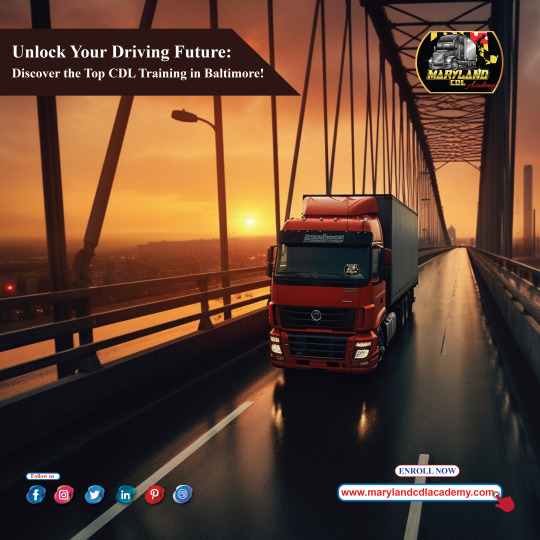
#CDLTraining#TruckDrivingSchool#BaltimoreTrucking#MarylandCDL#DrivingCareer#RoadToSuccess#CDLLicense#TruckersLife#CDLPrep#DrivingSchoolNearMe#CDLSchool#CDLSchools#TruckDrivingClasses#MarylandDriving#CDLTrainingProgram#TruckerLife#RoadToCDL#CDLJobs#ProfessionalDriving#MarylandTrucking#CDLTestPrep
0 notes